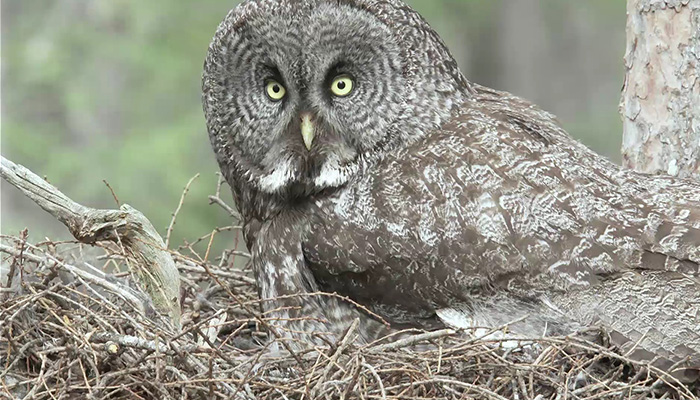
English: Great Grey Owl, Lapland Owl, Dark Wood Owl, Striped Owl
Russian: Бородатая неясыть
Mongolian:
Угалзан ууль, Угалзан бэгбаатар
German: Bartkauz
French: Chouette lapone
Japanese: カラフトフクロウ (Karafuto-fukuro)
Body length: 59-68cm
Wing span: 128-148 cm
Mainly
resident in lowland boreal forests, often near bogs or infields; rare and
local. Partly nomadic. Mainly crepuscular (incl. on light northern summer
nights). Food almost exclusively voles (in spite of size-bulk made up of
feathers, not muscles and bones!), caught on ground after watch from perch.
Nests in abandoned raptor’s nest or on top of broken tree trunk, rarely on
ground. Some are aggressive when their young are about to leave nest, others
fairly tame and will permit rather close observation.
Identification: Large, with thick neck and proportionately very
large and rounded head, looking like a sawn-off log in profile. Wings very
long, broad and rounded, tail fairly long, well rounded. Impressive-looking in
flight, with measured, slow wingbeats (almost heron-like), capable of long glides. Basically dusky grey with darker
grey pattern, underside paler, breast and belly coarsely streaked and finely
vermiculated. Facial pattern surrounding small yellow eyes and bill striking
with white ‘eye-bows’ and black chin. Upperwing shows conspicuous large pale
buff patch at base of primaries and dark grey carpal area and forewing;
shoulders pale grey (‘braces’). Uppertail has broad dark terminal bar (lacking
on Ural and Eagle Owls). When pair seen, ♀ larger and often with
proportionately slightly smaller head.